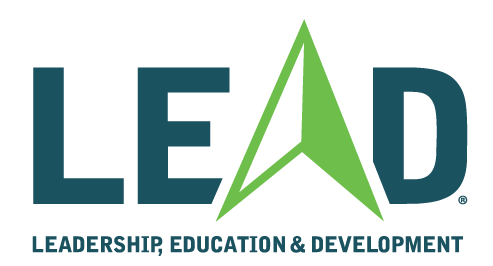
LEAD Mentor Resources
Rachel Martinez | rmartinez@wacochamber.com | 936-520-4931 mobile | 254-757-5633 office
LEAD Mentor Expectations
- Commit to the development of students with leadership potential who need guidance and encouragement in their pursuit of higher education and career goals
- Share expertise and leadership skills by encouraging and assisting in the development of students
- Make the time (twice monthly during the school year) and commitment (three years) to contribute to the lives of students
- Be a liaison between the LEAD Program and students and their families
Mentor Training Manual
The consistent, enduring presence of a caring adult in a young person’s life can be the difference between staying in school or dropping out, making health decisions or engaging in risky behaviors, and realizing one’s potential or failing to achieve one’s dreams. Mentors can make a profound difference in the lives of their mentees – and in turn, strengthen our communities, economy and country. - Willem Kooyker, Mentor.org
What is Mentoring?

What is Mentoring?
A mentor is a wise and trusted friend and guide.
Mentoring is a structured and trusting relationship that brings young people together with caring individuals who offer guidance, support and encouragement aimed at developing the competence and character of the mentee. Young people deserve quality mentoring relationships that allow them to more completely realize their full potential.
Did you know?
- Young people with mentor's report setting higher educational goals and are more likely to attend college than those without a mentor.
- 76% of at-risk young adults who had a mentor aspire to enroll in and graduate from college
versus 56% of at-risk young adults who had no mentor. - Young adults who had mentors, particularly those at-risk, are more likely to report engaging in productive and beneficial activities than youth without a mentor.
- 67% of at-risk young adults with a mentor are more likely to participate regularly in sports or extracurricular activities versus 37% of those who had no mentor.
- 51% of at-risk young adults with a mentor are more likely to hold a leadership position in a club, sports team, school council or another group versus 22% of those who had no mentor.
- 48% of at-risk young adults with a mentor are more likely to volunteer regularly in their communities versus 27% of those who had no mentor.
The longer the mentoring relationship lasts, the greater the value for youth. - 67% of young adults found their structured mentoring relationship very helpful of it lasted for a year or more versus 33% when the relationship lasted less than a year.
- 86% of young adults in relationships of more than a year report better outcomes in areas such as higher education aspirations versus 77% of those in relationships of a year or less.
- Young Adults who had mentors speak highly of these relationships and say that their mentors helped them stay on track in school, make good choices and provide consistent support.
- Nationwide, approximately 16 million youth, including nine million at-risk youth, will reach age 19 without ever having a mentor.
The Benefits of Mentoring
Benefits to Mentors:
Mentoring relationships are a shared opportunity for learning and growth. Many mentors say that the rewards they gain are as substantial as those for their mentees, and that mentoring has enabled them to:
- Have fun
- Achieve personal growth and learn more about themselves
- Improve their self-esteem and feel they are making a difference
- Gain a better understanding of other cultures and develop a greater appreciation for diversity
- Feel more productive and have a better attitude at work
- Enhance their relationships with their own children
Above all, a good mentor is willing to take the time to get to know their mentee, to learn new things that are important to the young person, and even to be changed by their relationship
Benefits to Mentees:
Support for education. Mentors help keep students in school. Students who meet regularly with their mentors are 52% less likely than their peers to skip a day of school and 37% less likely to skip a class (Public/Private Ventures study of Big Brothers Big Sisters). Mentors help with homework and can improve academic skills.
Support with day-to-day living. Mentors help improve a young person’s self-esteem, providing support for students trying to think through new challenges. Youth who meet regularly with their mentors are 46% less likely than their peers to start using illegal drugs and 27% less likely to start drinking (Public/Private Ventures study of Big Brothers Big Sisters). Mentors teach young people how to relate well to all kinds of people and help young people strengthen their communication skills.
Support in the workplace. Mentors help young people set career goals and take steps to realize them. Through personal contacts, mentors can help young people meet industry professionals, find internships and locate job possibilities. Mentors can help their mentees learn how to seek and keep jobs.
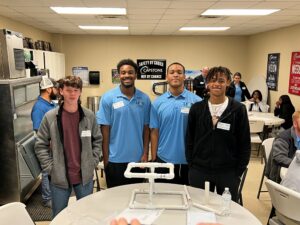
The adult-youth relationships created through programmatically arranged matches are, in a sense, both natural and unnatural. Being a mentor-a friend, listener, role model, supporter-comes naturally to many adults at work, in their extended families, or in their communities. But mentoring in a programmatically created relationship may require from adults some additional skills and inner resources.
Youth who are matched with mentors typically are facing many challenges in their lives, and they may have a realistic distrust of adults. Especially early in the relationship, the youth may be unresponsive-not showing up for meetings, barely talking-sending a message that seems to mean the mentor is unimportant. Even when mentors are able to help the relationship past this early stage, the youth may often continue to seem uncommunicative.
In addition, there is always at least some social distance between the mentor and youth. There are age differences: and in many cases, racial, ethnic and socioeconomic differences as well. Mentors have to be able to respect these differences and resist the temptation to impose their own values. Their goal is not to transform youth, but to help them grow: to help them discover their strengths and develop self-confidence, to help them feel they have a place in the world and a meaningful future.
The ABC’s of School-Based Mentoring
The Mentoring Life Cycle

The Four Tasks of Mentoring
Understanding the B.E.S.T. Mentoring Relationship
It is quite normal to be apprehensive about developing a relationship with your mentee. Remember that all relationships go through stages: beginnings, middles and endings. The time spent in each one of these areas will differ from relationship to relationship, but the progression is uniform. Likewise, all relationships are based on reciprocity and it is essential that both parties find the mentoring beneficial. In most cases, those who are willing to move through the unsettling beginning phase will find that their relationship will progress and bonds will be forged. Mentors should understand the importance of honoring commitments. Commitment is not only time but also being committed to the maintaining the relationship. Sometime mentors get frustrated when mentees do not open up right away, don’t return phone calls, don’t make significant progress, or “test” the mentors. Mentors should understand that honoring commitments means not only showing up, but also leading the relationship to success and navigating through rough spots. The mentor, as the adult, will often have to take the lead on conversations, initiate phone calls, set boundaries, and stick with the mentee when times get tough or progress is slow.
STAGE 1 — BUILDING TRUST
Establish a POSITIVE, PERSONAL Relationship
In this stage, both mentor and mentee are trying to clarify their roles. The relationship is filled with anxiety and uncertainty on both sides. As the mentor, you should take the initiative to explore mutual interests and find common ground. Trust is just starting to be built at this time and can be very fragile. It is common for your mentee to test the limits of the relationship at this time. Take your time and be patient. During this phase, you will experience one of the most exciting parts of the relationship — communicating with your mentee for the first time. This is the phase in which you get to know one another, set ground rules for your relationship, set boundaries and most importantly, build trust.
This is important because sometimes young people question why adults want to mentor them. They won’t tell you this, but they need to be reassured that you are doing this for sincere and genuine reasons.
As the mentor you must decide what boundaries are important to you before the match begins and certainly before being confronted with a difficult situation. Some specific areas where boundaries are important include:
- Money: How will I respond if a mentee asks me to buy him/her something? How much am I comfortable spending if we go out for a meal?
- Behavior: What would I do if my mentee uses foul language, mistreats others, or is disrespectful to me during our time together?
- Self-disclosure: How would I respond if my mentee asks me about my previous experience with sex, drug use, past relationships or other personal issues?
- Time: What would I do if my mentee does not show up for our scheduled meeting? Cancels on me at the last minute? Does not respond to my communication? Am I comfortable receiving phone calls in the evening/weekend?
It is best to set boundaries from the start. However, you can and should make adjustments to your relationship as necessary. It is better to adjust a boundary than to walk away from a relationship.
Finally, and most important, remember that you do not have to this alone. If you are unsure about a situation, need help figuring out how to proceed, or need an intervention, you can go program staff for support.
Things to Remember …
- Create a mutual foundation of trust and respect
- Approach problems with an open mind
- Never assume the role of the parent/caretaker
- Be dependable, responsive and highly consistent
- Fulfill your promises
Getting acquainted in Stage 1
- Introduce yourself to your mentee and let him/her know how to address you; be confident and smile
- Learn how to pronounce your mentee’s name
- Use an icebreaker activity to tell about yourself and allow your mentee to tell about themselves
- Be nonjudgmental and maintain composure if he/she initially acts in a shocking manner — the mentee may try to test your limits and do not engage in negative conversation
- End session (and every session) on a POSITIVE NOTE!
STAGE 2 — EXPLORING GROWTH POSSIBILITIES
Enhancing the Relationship — Help Your Mentee Develop Life Skills
In this stage, both the mentor and mentee are often somewhat confused about their roles. Conversation topics are becoming a mutual decision. Trust is still building, but not complete yet. This would be a good time to begin setting goals. Your mentee should begin to see you as a resource and be taking a more active role in the relationship.
What are Life Skills? Very simply put, life skills are tools everybody needs to survive, and can be as simple as learning the proper way to tip at a restaurant or tie a tie and as complex as knowing how to prepare for a job interview or filling out a college application.
Examples of life skills include:
- Personal appearance and hygiene
- Goal setting
- Understanding/appreciating differences
- Money management
- Perseverance and dedication
- Communication
- Time management
- Teamwork
- Critical thinking
- Decision making
- Importance of education
- Accountability
STAGE 3 — SUSTAINING THE RELATIONSHIP
Navigating Challenges
In this phase, trust has been established and conversation is more comfortable, personal and open. Both parties are actively contributing to the relationship; feedback (both negative and positive) is given and received without fear of rejection. Goal setting takes center stage as you and your mentee do some serious work together. In other words, things are running smoothly.
Sometimes, despite the positive flow of the relationship, your mentee may present you with challenges that they are facing. They see you as a resource, you have established trust, and you may appear to them to be the ideal problem solver at this point. In this stage it is important to remember that if the trust is compromised in any way, it will slow the progression of the relationship.
Ways to help:
- Problem solving — help your mentee assess the problem, identify solutions, review pros and cons of the choices and make a decision
- Discuss what resources and academic preparation are needed to pursue and achieve his/her goals.
- Guide the mentee (and their family if appropriate) toward the community, educational and economic resources that are available and explain ways to utilize them
- Don’t lend money (injecting money or gifts into the relationship places it in jeopardy)
- Avoid acting as professional case manager; view your role as a friend, guide, and advocate
STAGE 4— TRANSITIONING
When a relationship is about to end, it is important that you ‘close the match’ or end it well.
Many times, closure is a celebration for matches that have successfully completed the program or reached the maximum age limit. Whether the closure is the result of the program ending or due to unforeseen circumstances that require you to end the relationship, it is critical that you spend time to plan a final activity/meeting with your mentee. By participating in training, you are already taking steps to ensure that you will fulfill your commitment as a mentor. However, some relationships may have to terminate abruptly or early.
When it’s time to end your relationship, it’s best if you can do so on a positive note. Some suggestions to help you include:
- Celebrate when your match goals are reached. Evaluate if this a natural ending or do you both need to renegotiate new goals?
- Talk to your mentoring support staff if you see things coming to a natural point of closure.
- Taper off visits over time. Transition from weekly visits to less frequent interactions.
- Communicate the reason for closure and ensure everyone is on the same page.
- Celebrate the positive growth in the relationship and the completion of goals. Involve staff and parents in the celebration, if appropriate.
Facilitate reflection – remember and recall the highpoints & fun times in the relationship.
- Reflect on how you have each changed and grown because of your time together.
Transitions are part of every relationship. Make sure the natural transitions in your relationship with your mentee are handled with insight and care. And just like every aspect of a mentoring relationship, an ending handled well becomes another life lesson for your mentee to learn from.
Clarifying Your Role
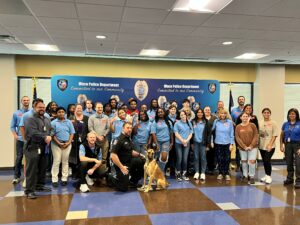
Clarifying Your Role:
Understanding the C’s of Mentoring
Although mentors should prepare themselves to handle various situations, there may be times that mentors are not sure what to do or say to their mentee. As you begin to understand more about your role as a mentor, you will see that there are five “C’s” which contribute to the successful development of the mentoring relationship.
Commitment: Any person who decides to become a mentor (or a mentee) must be committed to the process. First and foremost, you must have a clear understanding of what the commitment is.
Consistency: Once you have committed to the process you must be consistent with that commitment. It is important that you regularly attend the mentoring sessions and participate fully.
Concern: You should have a sincere concern for your mentee and/or issues raised as part of your mentoring relationship. Mentors are there as a guide, to be supportive and show compassion.
Connection: Finding that connection to another individual is difficult! However, mentors and mentees alike have told us that the phrase “you get out of it, what you put into it” could not be truer when we think of mentoring. Think of ways to share your expertise and build a respectful rapport. It can make a world of difference.
Confidentiality: Recognize that confidentiality between mentor/mentee should be respected at all times. Whatever is discussed should stay within that relationship as a courtesy to your mentee. However, in the case of potential harm to the mentee or another person, confidentiality must be broken. (In some cases, it is a legal requirement.) Confidential information about the student should only be discussed with the program manager/school liaison, no one else.
Connecting with Your Mentee

Connecting With Your Mentee:
Enhancing Communication Skills
Tips for Effective Communication
Talking and communication are not the same! There are three basic skills:
Listening, Looking and Leveling
1 LISTENING
To listen effectively:
- Pay attention
- Don’t think ahead to what you are going to say (ignoring the speaker while rehearsing your own comments)
- Don’t interrupt — let your mentee finish what he/she is saying
- Listen for feelings underneath the words — read “between the lines”
- Keep an open mind — don’t judge immediately
- Encourage the speaker to continue and clarify what has been said
2 LOOKING
People communicate both verbally and with body language, pay attention to the whole person. Take note of facial gestures and body movements. There are clues that will help you more fully understand what the person is saying. Some helpful tips:
- Make eye contact
- Show that you are listening by leaning forward in your chair, saying “Uh huh” or “Go on”
- Make sure you understand what your mentee is saying — repeat back what you think you heard
- Don’t be afraid to ask your mentee for clarification on what they said
- Keep an open posture — don’t cross arms.
3 LEVELING
Leveling means being honest about what you are feeling and thinking. Tips include:
- Be honest in what you say.
- Speak for yourself. Use “I” statements instead of “you” statements.
- Deal with the other person’s feelings. Don’t give unwanted advice or try to change someone’s feelings. Just listen and try to understand.
Helpful Communication Skills
The following four communication skills are very helpful for mentors to develop and practice. These skills are particularly useful when your goal is to open up communication with a young person. They are also useful skills that you can help your mentee develop:
- Active Listening
Active listening is an attempt to truly understand the content and emotion of what the other person is saying by paying attention to verbal and non-verbal messages. The task is to focus, hear, respect and communicate your desire to understand. This is not the time to be planning a response or conveying how you feel.
Active listening is not nagging, cajoling, reminding, threatening, criticizing, questioning, advising, evaluating, probing, judging or ridiculing.
Skills to Use:
- Eye contact;
- Body language: open and relaxed posture, forward lean, appropriate facial expressions, positive use of gestures; and
- Verbal cues such as “um-hmmm,” “sure,” “ah” and “yes.”
Results of Active Listening:
- Encourages honesty — helps people free themselves of troublesome feelings by expressing them openly;
- Reduces fear — helps people become less afraid of negative feelings;
- Builds respect and affection; and
- Increases acceptance — promotes a feeling of understanding.
When you actively listen, you cooperate in solving the problem — and in preventing future problems.
- “I” Messages
These messages give the opportunity to keep the focus on you and explain your feelings in response to someone else’s behavior. Because “I” messages don’t accuse, point fingers at the other person or place blame, they avoid judgments and help keep communication open. At the same time, “I” messages continue to advance the situation to a problem-solving stage.
For example: “I was really sad when you didn’t show up for our meeting last week. I look forward to our meetings and was disappointed not to see you. In the future, I would appreciate it if you could call me and let me know if you will not be able to make it.”
Avoid: “You didn’t show up, and I waited for an hour. You could have at least called me and let me know that you wouldn’t be there. You are irresponsible.”
Take care that the following actions and behaviors are congruent with an honest, open heart:
- Body language: slouching, turning away, pointing a finger;
- Timing: speaking too fast or too slow;
- Facial expression: smiling, squirming, raising eyebrows, gritting teeth;
- Tone of voice: shouting, whispering, sneering, whining; and
- Choice of words: biting, accusative, pretentious, emotionally laden.
Results: “I” messages present only one perspective. Allowing the other person to actually have a point of view and hearing it doesn’t mean that he or she is right. “I” messages communicate both information and respect for each position. Again, this skill moves both parties along to the problem-solving stage.
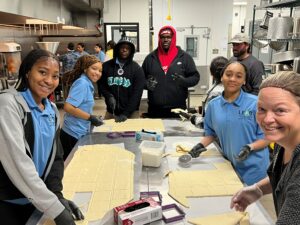
- Paraphrasing
Paraphrasing focuses on listening first and then reflecting the two parts of the speaker’s message — fact and feeling — back to the speaker. Often, the fact is clearly stated, but a good listener is “listening between the lines” for the “feeling” part of the communication. Using this skill is a way to check out what you heard for accuracy — did you interpret what your mentee said correctly? This is particularly helpful with youth, as youth culture/language change constantly. Often words that meant one thing when mentors were young could have an entirely different meaning for youth today.
Examples of fact:
- “So you’re saying that . . .”
- “You believe that . . .”
- “The problem is . . .”
Examples of feeling:
- “You feel that . . .”
- “Your reaction is . . .”
- “And that made you feel . . .”
Paraphrases are not an opportunity to respond by evaluating, sympathizing, giving an opinion, offering advice, analyzing or questioning.
Results: Using active listening skills will enable you to gather the information and then be able to simply report back what you heard in the message — the facts and the attitudes/feelings that were expressed. Doing so lets the other person know that you hear, understand and care about his or her thoughts and feelings.
- Open-Ended Questions
Open-ended questions are intended to collect information by exploring feelings, attitudes and how the other person views a situation. Open-ended questions are extremely helpful when dealing with young people. Youth, teenagers especially, tend to answer questions with as few words as possible. To maintain an active dialogue without interrogating, try to ask a few questions that cannot be answered with a “yes,” “no,” “I don’t know,” or a grunt.
Examples:
- “How do you see this situation?”
- “What are your reasons for . . . ?”
- “Can you give me an example?”
- “How does this affect you?”
- “How did you decide that?”
- “What would you like to do about it?”
- “What part did you play?”
Note: Using the question “Why did you do that?” may sometimes yield a defensive response rather than a clarifying response.
Results: Because open-ended questions require a bit more time to answer than close-ended questions (questions that can be answered by “yes,” “no,” or a brief phrase), they give the person a chance to explain. Open-ended questions yield significant information that can in turn be used to problem solve.

Communicating With Your Mentee
Body Language
Body language (also known as non-verbal language) is a powerful way to communicate, though many people don’t realize it. It is many times more powerful than the words we say. For example, if someone is telling you that she is really glad to have met you, but her arms are folded across her chest and she is looking behind you at someone else, do you believe what she is saying, or do you doubt her sincerity?
Make it a point to give your mentee your undivided attention — that means stop checking your watch, responding to e-mails or phone calls, or twiddling your thumbs. Let your mentee know that you are interested in what they have to say. Young people will be watching you and judging your sincerity, and if your actions are contrary to your words, you will lose what you have tried to build with your mentee.
Using Vocabulary
Think back to when you were a teen. Do you remember the language you spoke? Remember how adults criticized your language, dress and music? The same is true today. Does that mean that you should be trying to talk like your mentee? Absolutely not! If you do you will probably look foolish and lose your credibility with your mentee. Also, every job has its own jargon. Make sure you don’t confuse your mentee with words only you know. What words/terms do you use in your job that others might not understand? In our daily lives our language may vary based on our audience (i.e. we may speak differently to a friend or family member than we would with a supervisor at work). As a mentor, we have an opportunity to help youth understand that we use different languages in different environments.
Giving Feedback
- Feedback should be well-timed. Do not embarrass the young person or make an issue of something in front of other people. Even positive feedback needs to be timely. Hugging an adolescent or commenting on school performance in front of peers could be embarrassing. Remember, don’t let too much time pass “looking” for the right moment.
- Be Specific. Whether praising or working through problems, always be specific. For example: You may say “your math grade has gone up, you are really working hard and putting forth effort in math.” That is something specific that the student will remember — and build from rather than saying “you’re doing a good job.”
- Be Empathetic. Mentees are not looking for sympathy. As a mentor, offer an opportunity to have someone willing to listen with a sensitive ear who will also try to understand their perspective.
- Eliminate Distractions. Make sure your mentee understands that he/she has your undivided attention.
Successful Communication Outcomes
Every person has different ideas about what “ideal” communication looks like and consists of in a group mentoring relationship. However if the following statements are expressed at the end of the mentoring program, chances are you probably exercised effective communication on a regular basis.*
S/He Listened to Me!
S/He Respected Me!
S/He Was Demanding, But Realistic!
S/He Helped Me!
S/He Was Firm, But Fair!
S/He Was Consistent!
S/He Set a Good Example for Me!
S/He Made Me Stretch and Grow!
S/He Was Interested in What I Had to Say!
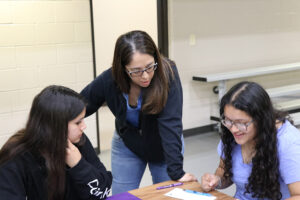
Communication Roadblocks
Thomas Gordon, in his book Parent Effectiveness Training, identifies several styles of communication that discourage and cut off communication. These are often styles exhibited between parents and their children and can develop in the mentor-mentee relationship. Here are examples of each style (so that you can avoid them!):
- Ordering, directing and commanding: telling the person what should be done. “Don’t stay out past midnight!”
- Warning, admonishing, threatening: pointing out consequences that will occur if the young person does something he/she is not supposed to do. “If you don’t get at least a B on your test, you can just forget about the football game this weekend.”
- Moralizing, exhorting, preaching: telling a person what to do. “You shouldn’t even consider having sex until you are married.”
- Judging, criticizing, disagreeing, blaming: giving negative judgment or feedback. “That’s a very immature and selfish way of looking at things.”
- Discounting feelings with feigned compliments, giving misleading, distracting feedback. “I think you are good looking. I don’t know why having braces bothers you.”
- Name calling, ridiculing, shaming: embarrassing a person, putting a person down. “You are acting like an idiot.”
- Reassuring, sympathizing, consoling, supporting: trying to make a person feel better by denying his/her feelings or convincing the person that the situation isn’t as bad as he/she thought. “So you broke up with your girlfriend. Do you know how many times I got dumped when I was your age? Tons!”
Probing, questioning, interrogating: searching for causes, motives, and reasons to help you find a solution to another person’s problems. “What’s going on in your classes? Are you worried about your grades? Are you thinking about dropping out of school?”
Building Your Mentee's Self-Esteem
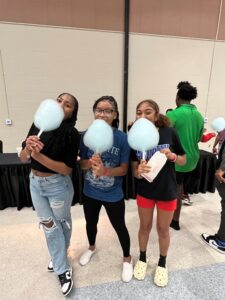
Building Your Mentee’s Self-Esteem
Young people need a mentor to create opportunities for them to enhance their self-esteem. Foster their self-esteem by valuing your mentee and by showing commitment and concern on a consistent basis. Expose the youth to positive experiences — choose activities that are guaranteed to provide a sense of success and accomplishment. Have you ever had a bad self-esteem day? Maybe your hair doesn’t look good or your pants are too tight. Think about how you feel. Just like you, young people will have bad days. Perhaps an outing that you thought would be wonderful is not well received by your mentee. Do not take it personally. Their reaction may have nothing to do with you or your role as a mentor. We all have bad days. Your challenge as a mentor is to help the young person work through those times and learn how to cope appropriately.
Self-Esteem is a sense of …
… Belonging
… Competency
… Worthiness
At this time in their lives, adolescents are just beginning to challenge the information they receive as well as testing a person’s commitment to their word. Again, it is critical that as mentors we follow-through and remain consistent. We stand to lose credibility with youth if we are not consistent with what we say and what we do. Mentees will be testing the character of their mentors. Young people are very perceptive and will know when you are being honest and sincere. Resist the temptation to say what you think they want to hear because you hope to make them happy. Be honest. If you are uncomfortable with a question or don’t know the answer, just say so. In some cases, the experience could be used as a learning opportunity.
Factors that help build self-esteem include:
- Finding work you love or developing the capacity to love your work
- Developing an open mind, tolerance and respect of others
- Keeping an open mind to learn more; being receptive to learning from others
- Addressing basic needs, including staying physically healthy
- Being able to communicate with others without either one of you feeling “put down”
The Four Principles of Self-Esteem
In briefest form, the principles of self-esteem are four:
- Errors are one of the best ways human beings have of learning and growing better. We must always endeavor to:
- Be ready to admit them;
- Be willing to accept the consequences of them;
- Persist in our efforts to correct them; and
- Remember the correction, and do not dwell on the error.
- To maintain self-esteem, human beings must always try to recognize and properly use the differing roles of emotion and reason. Emotions are internal signs that tell us of our well-being according to the values we hold. Emotions are not always proper guides to action.
- To maintain self-esteem, we all must strive to fulfill the things in our lives for which we truly are responsible. Distinguishing between those that are our responsibilities and those which are not is crucial.
- To be a person of genuine self-esteem, one must always seek to act in accordance with principles that give equal respect and weight to one’s own rights and to the rights of all others. A human right, if it is a right, should be the same for every human being on earth.
At the apex of this theory of self-esteem is found the idea that each human life should be of immense good and great value. Every human being becomes his or her own custodian of that valuable goodness. Thus, one’s own life, welfare, happiness and fulfillment become a trust that is worthy of the highest degree of respect. This inner respect and this inner striving for good, we call self-esteem.
Self-Awareness
Emotional Well-Being, Self-Esteem and Self-Actualization
Background
Adolescence is typically a time of great stress and strain on the body, mind and emotions. G. Stanley Hall referred to the period of adolescence as a time of “sturm und drang” or storm and stress (LeFrançois, 1996). This is explained by the fact that adolescents experience more life-changing external and internal factors, and situations then pre-adolescents (Mullis, et al., 1993). The flood of hormones through the body and the internal changes that are experienced during this period are major contributors to stress. Some of the external changes, which can happen at any age, could be family related, sickness, death, divorce or trouble with the law. Some of the other changes that occur during this period can be labeled as school-based, such as trouble with grades, breaking up with a girlfriend or boyfriend, or being cut from a sports team. Overall, there is more of a daily connection to negative events during the period of adolescence than during the periods of pre-adolescence (LeFrançois, 1996). Adolescents begin to “break free” from their parents to find their own identities, and in some cases that break creates a loss of childhood reality or the protective nature of childhood.
LeFrançois (1996) offers definitions for significant self-awareness terms:
- Self-esteem is the positive or negative way an individual views himself or herself. It also entails the desire to be held in high esteem by others.
- Self-concept is the concept that an individual has of himself or herself. Notions of self are often linked to an individual’s beliefs about how others perceive them.
- Self-actualization is the process or act of becoming oneself, developing one’s potential, achieving an awareness of one’s identity and fulfilling oneself.
Striving for a Sound Foundation: Emotional Well-Being
To deal with the forms of stress and overall life changes created by the onset of adolescence, individuals must have a strong grasp of their own emotional well-being. Emotional well-being can be defined as one’s ability to relate to other people, feel comfortable with self, cope with disappointments and stress, solve problems, celebrate successes and make decisions. (Page & Page, 1992). Emotional well-being is built upon the foundation of a positive and healthy self-esteem. Self-esteem can be viewed as an evaluative component of self-image. Self-esteem is the positive or negative manner in which people judge themselves. It is also the degree to which an individual sees himself or herself as competent, belonging and worthwhile to society.
Self-esteem is the foundation for emotional well-being. There are activities and more information in this section to assist the mentor in helping his/her mentee build self-esteem and address problems caused by low self-esteem. Self-esteem is also the source of many ills a person can perpetrate against himself/herself or others. It is the one of the most fragile of human elements. It is important for mentors to observe their mentees’ self-esteem, to talk to them about how they feel about themselves, and to help them find a way to see their own self-worth.
Below are some of the characteristics of emotional well-being.
Characteristics of Emotional Well-Being
- I feel comfortable with myself.
- I am not overwhelmed by my emotions.
- I can take life’s disappointments.
- I can accept my shortcomings.
- I have self-respect. I can laugh at myself.
- I feel good about the relationships I hold with other people.
- I am able to give love and to consider the feelings of others.
- I respect the differences I find in other people.
- I feel a sense of responsibility to others.
- I am able to meet the demands of my life.
- I welcome new experiences and new ideas.
- I set realistic goals for myself.
- I am able to think for myself and make my own decisions.
- I put my best effort into everything that I do. (Page & Page, 1992)]
These characteristics are a picture of emotional health. Most people would not score perfectly if rated against this list. It is important for mentors to explain to their mentees that most everyone struggles in some way at some time with their self-esteem. The next section will give the components of self-esteem and how to adjust and improve them.
Self-Esteem: The Parts to the Whole
The components of self-esteem vary depending on the source. The following explanation is easily understood.
- The Self-Image. How we see ourselves.
- The Ideal-Self. How we want to be.
- The Pygmalion-Self. How we perceive that others see us. (Page & Page, 1992)
A sense of competency, worthiness and belonging is formed by a combination of these three elements. The foundations of self-esteem are created early in childhood. For instance, if an individual’s interactions with parents and others were for the most part positive (mutually caring, happy, and sound relationships), the individual’s self-esteem would likely be high. However, if parental and other primary interactions were mainly negative, an individual’s self-esteem could be lacking.
It is important for mentors to be able to recognize the signs and behaviors of high and low self-esteem. For example, academics can deliver a damaging blow to a student’s self-esteem. As early as age 5, students begin to realize that perhaps they are not as “smart” as some of the others in the class. This realization hurts their self-esteem and begins to cause changes in their everyday classroom behavior in relating to subject matter, teachers and peers.
The following chart will also help mentors as they work with mentees in the academic setting.
|
Behaviors Commonly Seen in Students with High Self-Esteem |
|
Active, curious about surroundings; makes wide variety of contacts. |
|
Makes friends easily, talks and laughs; gets in trouble now and then. |
|
Has a sense of humor, is a good sport, can laugh at themselves. |
|
Asks questions, defines problems, willingly does his part in planning for solutions and carrying out plans. |
|
Willing to take risks in a classroom. Contributes to discussions and is able to stand up for what they think. |
|
Takes modest pride in own contributions; is not overbearing and does not cheat. |
|
Works and plays well with others. Cooperates easily and naturally. |
|
Usually happy, confident; does not whine for what cannot be had. |
|
Behaviors Commonly Seen in Students with Low Self-Esteem |
|
Mildly passive, tends to avoid new experiences, has limited contacts. |
|
Shy, bashful, quiet and withdrawn. |
|
Tends to be overly serious, Hypersensitive; afraid to be laughed at. |
|
Avoids getting to the problem, grumbles that what is wanted is not clear, plans in terms of wishful thinking. |
|
Unsure, backs down easily, frequently asks others: “Do you think this is right?” “What do you think?” |
|
Aggressively asserts own ability and contributions, finds it difficult to share; undermines others when possible. |
|
Overly competitive, finds it difficult to share. Undermines others when possible. |
|
Usually gloomy and fearful, worries as a matter of course, complains a lot. |
For adolescents, self-esteem is fragile and is easily wounded outside the academic realm as well. Physical attractiveness has a powerful impact on self-esteem during the adolescent years. During this period, rapid changes occur in the body’s appearance, form and size. With the development of sexual hormones, adolescents become fixated on the appearance of their bodies and the bodies of others.
Concurrently with these massive changes, adolescents are moving away from their families and toward their own peers. Peer pressures and conformities are intense and adolescents are not very tolerant of differences, shortcomings or aberrations. Another strain is the pressures imposed by media and society. Today, children and adults are bombarded with what the “perfect guy” or “perfect girl” is supposed to look like. It is difficult for many students to grasp the idea that not everyone in the world can look as though they stepped off the set of Baywatch. It is especially difficult for adolescents to realize that everyone has their own size and shape, and that is all right.
Keys to Increasing Self-Esteem
- Listen to Self-Talk: Do you ever listen to those negative thoughts in your head? Replace the negative thoughts with positive thoughts. An example would be, “I can do this because I’ve studied hard for this test” or “I’m proud of myself for the way I handled that situation.”
- Recognize Accomplishments: Make a list of your accomplishments, no matter how small or minor they may seem to you. This will help to build a sense of self-worth.
- Be Assertive: Say what you mean and respect what others say. Practice clear communication.
- Be Tolerant: Be tolerant of others and especially of yourself. Nobody is perfect. Try not to criticize others or yourself. Do not be afraid to admit a mistake; just learn from it.
- Build a Support System: Spend time with people that appreciate you for who you are. Value your friends and let them value you.
Increasing Self-Esteem
Feelings of self-worth come from both external and internal influences. External feelings of self-worth arise from such things as appearance, group acceptance, school awards, and social recognition. The external aspects of self-esteem are largely based on personal achievement, which creates conditional self-esteem. In other words, this kind of self-esteem is solely based on a person’s achievement rather than on his or her inner character qualities. Individuals who base their feelings of self-worth on external factors are more likely to have an unhealthy self-esteem. (Page & Page, 1992)
Internal feelings of self-esteem come from being a unique individual, with inner character or personality qualities such as resourcefulness, sense of humor, or sense of integrity. These are considered forms of unconditional self-esteem because they are based on the individual, not on his or her achievements. Persons who base their self-esteem on internal factors (i.e., resourcefulness, responsibility, loyalty, sense of humor, or integrity) are more likely to have a healthier self-esteem. (Page & Page, 1992)

Activities to Help Bolster Self-Esteem and Self-Worth
- Strengths and Weaknesses — Discuss the Wise Man’s Prayer:
“God grant me the strength to accept the things I cannot change, the courage to change the things I can, and the wisdom to know the difference.”
- Then Discuss the Following Prompts:
My most important strengths are …
My most serious handicaps are …
Things I can change for the better are …
Things I am going to have to accept are …
- Pygmalion-Self
Have your mentee complete each phrase with at least two answers with honesty and depth.
My closest friend truly thinks I am …
My classmates think I am …
My parents honestly think I am …
A stranger’s first impression of me might include …
- Roles I Play
Discuss how different people can view the same person differently. Then discuss the following prompts. To me, I am …
To my family, I am …
To my peers, I am …
To a special friend, I am …
- Self-Talk
Discuss how words can affect our emotions and thus our self-esteem. Discuss how the saying, “Sticks and stones may break my bones but words will never hurt me” does not exactly apply in real life. Ask the mentee to help you compile a list of self-put-downs and self-praise. And discuss their impact on self-esteem and self-worth.
Exploring & Valuing Diversity
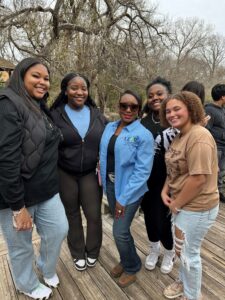
Exploring and Valuing Diversity
How we associate with other people and express ourselves is diversity. There are all kinds of assumptions and stereotypes based on gender, size, clothes, etc. As much as we all try to be objective, we all have some theories about people based on stereotypes. Try to be aware of your thoughts, responses and assumptions as you work with others and recognize that others will be encouraged to do the same. Supporting an environment that welcomes differences in abilities, individual attributes and personalities allows people to contribute their best every day.
Young people need a mentor to help them see that diversity goes beyond race and gender. Diversity includes all of the wonderful things that we put on the walls. Personal expression is a form of diversity. How we associate with our peer group and express ourselves is diversity. Think back to when you were a teen. What did adults think about your clothes, hairstyle, and the music that you listened to? Many young people have not had much exposure to other communities. Expand their world. Visit the many festivals and cultural events that exist in Waco; encourage youth to go outside their immediate neighborhood to experience other cultures.
Stereotyping
This unit addresses one of the most critical training needs that has surfaced in surveys of mentors and volunteer coordinators: the need to help mentors deal with diversity. Some mentors talked about “culture shock” in reference to their initial apprehension and lack of familiarity with, and/or understanding of, the world from which their mentees came. When you think about it, it is normal and natural to feel a certain amount of apprehension about meeting someone for the first time, especially if it’s expected that you will become a trusted friend. Add to that a significant difference in age, in socioeconomic status and/or in racial and ethnic background and it is easy to understand why this is such a critical issue for mentors.
Toward a Broad Definition of Cultural Diversity
Many mentor programs prefer to match mentees with mentors who come from similar backgrounds in terms of race, socioeconomic status, etc. Often this is not possible, and mentors are matched with young people who may look and act very differently than they do and whose backgrounds and lifestyles may be dissimilar to their own.
Culture, in this sense, is more than race or ethnicity. It encompasses values, lifestyle and social norms, and includes issues such as different communication styles, mannerisms, ways of dressing, family structure, traditions, time orientation and response to authority. These differences may be associated with age, religion, ethnicity and socioeconomic background. A lack of understanding and appreciation of cultural diversity can result in mentors becoming judgmental, which may prevent the development of a trusting relationship.
What Can You Do?
As in many other situations, knowledge is the key to understanding. Below are descriptions and examples of different diversity issues. Each has the potential to cause misunderstandings between a mentor and a mentee. However, cultural understanding is not something you can learn exclusively from a textbook. Talk to your mentee about his or her background and ancestry, about what life is like at school or home, or with his or her friends. Find out the reasons for what he or she does. Your program director, other mentors, friends and coworkers may also have insights into cultural differences.
As you begin to learn and understand more about your mentee, you will be less likely to make negative value judgments. We hope that these examples will help you become more knowledgeable about and encourage you to explore your mentee’s cultural background.
Ethnic Diversity
If your mentee comes from a different ethnic background, learn about the values and traditions of that culture. Such things as the role of authority and family, communication styles, perspectives on time, ways of dealing with conflict and marriage traditions vary significantly among ethnic groups.
For example, people from Scandinavian and Asian cultures typically are not comfortable dealing directly with conflict. Their approach to problems or disagreements is often more subtle and indirect. Consequently, a mentee from one of these cultures may find it difficult to discuss a problem with candor. Similarly, many Asian and Hispanic families emphasize respecting and obeying adults. For them, disagreeing with an adult, particularly a family member — or in this case a mentor — is forbidden. Conversely, the role and style of communication of some African Americans is much more direct and assertive.
Many Asian cultures have unique courtship and marriage traditions. For example, a Hmong girl typically marries before age 18 and most often is expected to marry a Hmong man of her parents’ choosing. She may have no choice about whom she marries.
Ethnic groups can also vary in terms of their beliefs about and orientations toward time. For instance, some Native Americans may follow an inner clock, which they believe to be more natural, rather than adhering to a predetermined agenda or timetable.
Families that have recently arrived in this country often develop distinct reaction patterns. Children of recent immigrants typically react negatively to their parents’ insistence that they follow the “old ways.” These children are often ashamed of their culture and their traditions. They may even be ashamed of their parents. Mentors can help their mentees celebrate the uniqueness of their culture by showing curiosity and interest in the history and traditions of their mentees’ cultures.
Obviously, these are gross stereotypes. They are used here only to demonstrate the range of diversity among different ethnic groups. It is your task as a mentor to learn about ethnic diversity from your mentee, from your observations and from discussions with program staff so that you can better understand the context of your mentee’s attitudes and behavior.
Socioeconomic Diversity
Often, mentors come from different socioeconomic backgrounds than their mentees. While one may have grown up on a farm, the other may never have been outside of the city. One may own a house, while the other may not know anyone personally who owns a new car, let alone a house. A mentee’s family may move frequently, perhaps every few months, and may not have a telephone. A mentee may have to share a very small apartment with many people. A mentor must learn that many things s/he may have taken for granted are not necessarily common to all. These types of cultural differences are common between mentor and mentee and require time and understanding for an appreciation of their significance. Remember, however, that poverty is color-blind, i.e., many white people are poor, many people of color are not and dysfunction can occur regardless of income, geographic location or level of education. Try not to make assumptions.
It is important to realize that there are psychological effects of chronic poverty. Some mentees may develop a short-term “culture of survival” attitude. A mentor may comment that her mentee, who comes from a very poor family, spends large sums of money on things she considers frivolous (the example she gives is $100 jeans). Poverty often prevents people from believing that their future holds any promise of getting better. Saving money and investing in the future is a luxury they don’t believe they have. Buying a pair of $100 jeans when you don’t have enough food to eat may very well be a function of the “take what you can get while you can get it” perspective of chronic poverty.

Youth Culture
Many of the characteristics of adolescence are normal, common, developmental traits and consequently don’t vary significantly from one generation to the next. For instance, while many adults believe that, in general, teenagers are exceedingly more rebellious than they themselves were as young people, rebellion is a common (and perhaps necessary) ingredient in an adolescent’s transition into adulthood. Most of us, as teenagers, dressed very differently — perhaps even outrageously — by our parents’ and grandparents’ standards. We did things our parents didn’t do, spoke differently, etc.
Take the time to remember what it was like to be your mentee’s age. If you think about the following questions, you’ll find that much of what you went through at that age, your mentee is also going through:
For example, when you were in ___ grade:
- What was a typical day like?
- What was really important to you at that time?
- What was your father/mother like? Did you get along? Were you close?
- Think of your friends. Were friendships always easy or were they sometimes hard?
- In general, did you feel as though adults typically understood you well?
However, it is also important to remember that some things, particularly sociological trends, do change dramatically and result in very different experiences from one generation to the next. There is significantly more alcohol and drug abuse today than there was when you were growing up (although, to be sure, alcohol and drug abuse have always existed); sexually transmitted diseases are more common and more dangerous; crime and violence have drastically increased throughout the country, particularly in urban areas; single-parent families have become more common and greater demands are being placed on all families.
For example, one mentor had a conversation with his mentee about school dances, which for the mentor were filled with fond memories of discovering dating and dancing. For the mentee, on the other hand, school dances were dangerous, since gunfire was a common occurrence. Obviously, it is important to be aware of these generational changes in lifestyle and children’s coping responses to their life circumstances.
Remember …
The following are some suggestions that may help you successfully handle diversity:
- Keep in mind that you are the adult — you are the experienced one. Imagine, for a moment, what your mentee might be thinking and feeling. In general, young people of all ages, but particularly teens, believe they are not respected by adults and worry about whether a mentor will like them or think they’re stupid. They are coming to you for help and may already feel insecure and embarrassed about the problems in their lives. Thus, it is your responsibility to take the initiative and make the mentee feel more comfortable in the relationship.
- It’s also important to remember to be yourself. Sometimes, with the best of intentions, we try to “relate” to young people, use their slang and be like “one of the gang.” Mentees can see through this facade and may find it difficult to trust people who are not true to themselves.
- Furthermore, you may learn a lot about another culture, lifestyle or age group, but you will never be from that group. Don’t over identify with your mentee; s/he realizes you will never know exactly what s/he is feeling or experiencing. A mentee may actually feel invalidated by your insistence that you know where s/he is coming from. There is a big difference between the statements, “I know exactly what you’re feeling” and “I think I have a sense of what you’re going through.” It is helpful to paraphrase what you think your mentee has said or is feeling and to give examples of similar situations that you have experienced.
- If something about your mentee is bothering you, first determine whether the behavior is simply troubling to you because you would do it differently or it is truly an indication of a more seriously troubled youth.
If, in fact, you feel that a troublesome situation is harmful to your mentee or others, you have an obligation to discuss this with your program coordinator. The coordinator will know when and where to refer the young person for professional help. For example, if it is a serious problem — your mentee’s abuse of alcohol and/or drugs, for instance — the program coordinator may refer the mentee to an adolescent drug abuse program.
It’s important to know what you should and should not do or say to your mentee. You are not expected to solve the problem or to be a therapist, but there may be situations where you can help. For instance, your program coordinator might suggest that you actively support your mentee’s attendance and participation in support groups, or s/he might suggest that you talk with your mentee about similar situations that you have either experienced or heard about and the ways in which these problems were successfully overcome. Get suggestions from your program coordinator about ways in which you can be helpful and supportive.
Some behavior is not necessarily indicative of a serious problem but can nonetheless be troublesome. For example, being chronically late for appointments, adopting certain styles of dress or excessive swearing may have negative consequences. While your mentee has the right to make decisions about dress, speech and other behavior, you can help by letting him or her know:
- How the behavior makes you feel;
- What judgments others may make about the mentee as a result of the behavior; and
- The reactions and consequences s/he might expect from others.
Example: Let’s say your mentee usually wears torn jeans and a leather jacket with signs and symbols on the back, and is quite proud of his or her unusual hairstyle. Although these outward differences made you uncomfortable at first, you (being the great mentor that you are!) have gotten beyond these “troubling” aspects and realized that in this case “different” does not mean “bad.”
Now your mentee is looking for a job. Initially, you had decided to say nothing about the importance of appearances during job interviews, but your mentee is having trouble getting a job. You might ask him or her something like:
- Why do you think you didn’t get the job?
- What do you think was the interviewer’s first impression of you? What do you think gave him or her that impression?
- Do you think the impression you gave is one that is helpful in getting a job? What can you do about this?
- If you were 30 years old and owned a business, would you be hesitant to hire someone who looked and dressed in a way that was completely foreign to you?
You might also discuss ways in which your mentee could keep his or her individuality and identity (both very important needs in adolescence) yet make a more favorable impression. A typical response from a young person might be to refer to the “hypocrisy” and “material values” of the adult culture. Don’t mislead or misrepresent the truth — the fact is, like it or not, there are standards and norms in certain situations with which one is expected to comply.
Remember: Our lives are enriched by diversity!

As mentors, please remember to consider the following:
- Youth culture has unique rules. Young people often experiment with dress and behavior. You will need to distinguish typical, rebellious adolescent behavior from broader cultural differences.
- You will encounter differences. Mentees often differ from their mentors in age, racial or ethnic background and/or in socioeconomic status.
- Diversity is a two-way street. You may represent a different world to your mentee. For example, your mentee may know of no one else who has a career like yours.
- Be understanding and nonjudgmental. Your mentee may come from a world very different from your own. Taking time to share your world and learn about theirs is a win-win.
- Share your culture. Young people are curious. Answer their questions with patience, using this questioning and answering as a means to build trust.
What other issues are raised when young people become adolescents and what are the most effective ways to address these issues? While mentoring programs are not intervention programs, they can help young people to make decisions or seek professional help regarding serious issues that they may be facing.
Mentors, remember that communication styles can vary from culture to culture. For example, in some cultures people opt for a subtle approach to resolving conflict. Other cultures encourage direct confrontation. Some frown upon contradicting adults altogether.
Other Considerations
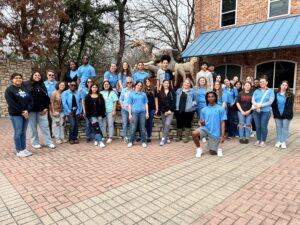
Other Considerations
Substance Abuse
Peer pressure, family history and popular culture can all contribute to a young person’s experimentation with alcohol, tobacco and drugs. Encouraging young people to discuss and ask questions about substance abuse is an important step towards engaging their trust and allowing them to educate themselves regarding its dangers. Your role as a mentor is to make literature and other resources available to them and help them to use those resources. By explaining to them why it is not healthy to use/abuse these substances and by taking the time to listen, you will give him/her the perspective of a trusted friend.
Child Abuse and Family Violence
Abuse, whether it is physical, sexual or emotional, detracts from a youth’s self-esteem in ways that sometimes only professionals can help change. A youth may become withdrawn or turn to peers for support and away from authority figures — no matter how well meaning. The youth may recreate a family history of violence or abuse in other relationships, thus continuing a cycle of self-hatred, shame and hatred or suspicion of others. These problems require professional help, and mentors should contact program coordinators to find such help, without breaking the youth’s trust in the mentor. A mentor may need to say: “I’m concerned for you and I have to report what is happening to you.”
Crisis
There are many circumstances/situations that can constitute a crisis for example: loss of a family member, divorce, loss of home, domestic violence, child abuse, severe violence, physical or mental illness, suicidality, drug related problems, legal problems, immigration issues. Your role as a mentor is to build a trusting relationship with your mentees and being able to list supportively is key. It is often scary for a young person to share difficult issues with an adult. Sometimes the youth may only drop hints about what is happening to see if the mentor is someone that can be trusted. Sometimes when a student has experiences a crisis, it is not a specific incident that occurred once and it over. Often young people live in situations in which mental illness, abuse, or violence surround them and they may confront dangerous situations repeatedly. In these cases, it is helpful to explore ways in which to protect themselves by discussing safety and helping them identify people and places they can access if in danger.
Ten Hints for Helping Someone in Crisis:
- Sitting at eye level with the young person
- Not acting surprised or shocked or angry when hearing about the crisis, but at the same time being honest and understanding that it is a difficult situation
- Remaining calm and compassionate about the child’s experiences.
- Don’t pressure the student to tell more than they are comfortable telling but instead use “open ended” questions to allow the student to continue if they are comfortable.
- Don’t make judgmental statements about the situation
- Acknowledge that the student trusted you enough to tell you
- Reflect back to the student what feelings they are expressing
- Affirm the student for using their coping skills
- Be honest about what you do with the information
- Brainstorm their options and offer appropriate resources
Depression and Suicide
Depression and suicide are often related to one or more of the issues above, compounded by a young person’s inability to find answers to serious questions or emotional support for difficult problems. It is important, first of all, to acknowledge the seriousness and the difficulty of their issues because adolescents are often encountering such problems for the first time. Telling them “It’s just a phase” or “You’ll grow out of it” only verifies any beliefs they may have that you just don’t understand. Suicide counseling is a matter for professionals, and mentors should contact program coordinators for referrals, with the adolescent’s knowledge. In addition to seeking professional help for the youth, mentors can listen, provide resources and help the youth to use them, and provide a support system while the youth and professional counselor seek answers.
In a case where a young person’s friend or school mate has committed suicide or has died unexpectedly, counseling and emotional support are necessary to prevent others from following suit for many reasons: as a “solution” to problems, as a cry for help or attention, as a form of “revenge,” or as a way to resolve feelings of helplessness over the first death. School counselors, psychologists and social workers can organize and implement school-wide or area-wide counseling in such cases.
Peer Pressure
Today, youth are gathering information, advice, ideas and signals from people other than their parents and teachers. They look to their peers for approval, comparison, a source of self-esteem and their own identity. It is important to instill a sense of self into young people if they are to learn to make educated decisions in situations without input from authority figures or their peers. Scolding or playing savior will hinder trust-building, while transferring the source of approval from the mentee’s peers to yourself will end up making you partly responsible for the mentee’s decisions should they backfire, and will detract from the mentee’s ownership of his/ her successes when those decisions prove effective.
As mentors, our challenge is to help young people see that they have choices and that they can connect with positive rather than negative peer groups. In some instances, your mentee may have an opportunity to become a leader and direct his/her peers into positive groups. As mentors we become a neutral voice, an independent partner, which can have a positive impact or influence.
Emerging Sexuality and Teenage Parenting
Adolescents are discovering who they are, which includes their sexuality. Young people in need of intimacy, emotional support or personal prestige may turn to or seek out sexual relationships to satisfy these needs and curiosities. For these reasons, effective education on sexual issues should include honesty, skills for making decisions, protection options, setting goals, setting limits for relationships, fulfilling emotional needs without sex and taking responsibility for decisions and their consequences. There are many professional organizations that can provide information to help you with these discussions. Begin by asking the program coordinator for guidance!
Bullying
It is heartbreaking and frustrating to see your mentee dealing with a bully. It’s also very dangerous both physically and emotionally. * Encourage your mentee to report the behavior. * Let the student know it is not his/her fault. * Protect the student. * Enlist the support of the parents and school to help deal with the problem. * Review the schools no bullying policy and encourage its enforcement. * Do not ignore bullying. * Don’t assume bullying is only physical as a lot of bullying occurs over the internet.
Money Matters
Mentors often have questions about money and gifts during their mentoring relationships. Mentoring is about friendship, not what the mentor can do or buy for the mentee. Modest gifts should be reserved for special occasions. If your mentee or their family has a basic needs emergency, notify program staff. Staff may be able to connect the family with resources in the community. Model good spending habits and budgeting for the mentee. Take advantage of free or low-cost activities in the community. “A mentor has a golden opportunity to show their mentee several aspects of money management, including spending habits, saving, and ways to have fun without spending money.” –From The Mentoring Answer Book
Remember that once you start spending money it is hard to go back, that trying to solve a mentee’s problems can create a sense of guilt and dependency in the mentee and most importantly the program policies prohibit such activities.
Ages & Stages of Youth

Ages and Stages of Youth
14-to-18 Year Olds
General Characteristics
- Testing limits, “know-it-all attitude”
- Vulnerable, emotionally insecure, fear of rejection, mood swings
- Identification with admired adult
- Bodies are going through physical changes that affect personal appearance; very self-conscious about growth
- Diet and sleep habits can be bad, which may result in low energy levels
- Rapid weight gain at beginning of adolescence. Enormous appetite
- Friends set the general rules of behavior. Fear of ridicule and being unpopular
- Feel a real need to conform. They dress and behave alike in order to “belong”
- Are very concerned about what others say and think of them
- Going to extremes, emotional instability with “know-it-all” attitude
- Are caught between being a child and being an adult
- Look at the world more objectively, adults subjectively, critical
- Can better understand moral principles
- Attention span can be lengthy
- Argumentative behavior may be part of “trying out” an opinion
- Romantic or Sexual relationships/experimentation
Suggested Mentor Strategies
- Give choices and don’t be afraid to confront inappropriate behavior
- Use humor to diffuse testy situations
- Give positive feedback
- Be available and be yourself, with strengths, weaknesses and emotions
- Be honest and disclose appropriate personal information to build trust
Suggested Activities
- Aerobics class
- Ethnic restaurants
- Long walks and talks
- Cooking, movies
- Shared community service projects
- Car repair

Goal Setting
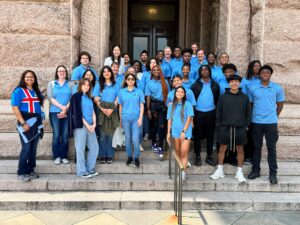
Goal Setting
Why Set Goals?
Goal setting is an important part of the mentoring relationship. By gaining awareness of the importance of goal setting and incorporating this feature into the mentoring relationship, mentors can give their students greater skills and more practice in meeting their potential.
One of the most effective ways to build the mentor/mentee relationship is to participate in activities based on the goals of the mentee:
- If college entrance is a goal, mentor and mentees can tour a campus together
- If higher academic achievement is a goal, tutoring sessions, lessons on note taking and visits to the library are appropriate
- If career education is a goal, the mentor and mentee can visit the mentor’s workplace
- The mentor and mentee can work on learning a new skill
In addition to doing activities, mentors can help build the relationship by:
- Monitoring attendance and calling with encouragement when students are absent and providing feedback on behavior
Sample goals may include:
- Going to school and improving grades
- Improving relationship with family members
- Taking part in community service
- Learning about college and careers
- Saving $500 by the end of the year
- Learning how to tie a tie correctly
Goal Setting:
- Encourages a problem-solving approach to obstacles
- Encourages discipline
- Encourages opportunity
- Facilitates clear conceptualization of what you want to do
Goals are: S.M.A.R.T.
- SPECIFIC
- MEASURABLE
- ACHIEVEABLE
- REALISTIC
- TIMELY
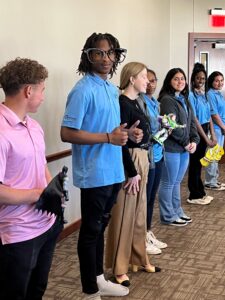
Sample Goal Setting Worksheet
- Mentor/Mentee Relationship (Sample Mentor Goals)
- Meet with mentee (face-to-face) for at least two hours per month.
- Talk with mentee at least once per week on the telephone, two phone calls per month must be initiated by the mentee.
- If a meeting must be missed, it is the mentor’s responsibility to:
- Contact the mentee prior to the meeting, giving at least two hours notice if possible.
- Reschedule the meeting for another time.
- School Performance (Sample Mentee Goals)
- Attend school regularly
- Put forth satisfactory effort (e.g., completes assignments neatly and on time, participates actively).
- Earn report card notations that indicate acceptable to outstanding behavior (commendations from school staff, absence of office referrals, etc.).
- Academic performance showing progress in one or more subjects.
III. Out-of-School Performance (Sample Mentee Goals)
- Establish and maintain good relationship with family.
- Develop and/or maintain positive personal habits (e.g., refrain from the use of illegal drugs, alcohol and cigarettes, and from early parenthood).
Mentoring Activities

Mentoring Activities
A Year’s Worth of Mentoring Activities
52 ideas, one for each week of the year (cross them out as you do them!)
- Ask Mentee to give you a tour of their school
- Talk about goals
- Plan a career/look up careers on the internet
- Give them (pretend) one hundred dollars, map out what they would do with it and why
- Visit a place around the world (globe, map, internet)
- Make a card for someone special
- Lear about their type of music
- Have a picnic outdoors
- Help with schoolwork/school project
- Plant a flower/tree
- Make popcorn and share/Listen as they talk
- Play Scrabble (challenge mentee to put their spelling words on the board)
- Exercise
- Shoot some hoops
- Start a hobby
- Read newspaper and discuss current events
- Have a picnic outdoors
- Help with schoolwork/school project
- Visit another place around the world
- Share a snack
- Exercise
- Shoot some hoops
- Volunteer together
- Create and carve a pumpkin on Halloween
- Teach how to give a proper handshake
- Eat at a nice restaurant and have mentee calculate tip
- Build a kits or construct a rocket and go fly/launch them
- Create a time capsule
- Help your mentee with their resume
- Research colleges/universities together
- Discuss finances and opening a savings/checking account
- Plan for future careers. Conduct a mock job interview, discuss dress codes and fill out an application together
- Help your mentee to craft a personal mission statement
- Remember your mentee on his/her birthday and send a card/text
- Help your mentee create a business card
- Ask your mentee where they hope to me in 5 years
- Help your mentee get organized
- Discuss travel and dream vacations
- Discuss the pillars of character including: pride, punctuality, honesty, responsibility and communication
- Help with homework
- Plan a Random Act of Kindness
- Play your mentee some of the music you like and discuss
- Have your mentee play you some of the music they like and discuss
- Encourage your mentee to try a new activity/sport
- Arrange for your mentee to shadow a corporate executive in the profession they are interested in
- Read the newspaper together and discuss current events
- Practice answers to the questions for the driving test
- Play a round of Disk Golf
- Discuss all the “cool” things to do in Waco and have fun experiencing some of them
- Be open and honest with each other
- Celebrate their success
- Celebrate your success
Additional Resources
Suggested Resources
References
The Mentor Handbook-Second Edition — written by Susan Weinberger, Ed.D., director of the Norwalk Public School Mentor Program in Connecticut, this guide is for adult volunteers, sponsoring companies or organizations and schools involved in a one to one mentoring/support program. For more information contact: Educational Resources Network, Inc., 18 Marshall Street, Norwalk CT 06854, Phone: 203.853.6847
The Two of Us: A Handbook for Mentors — this handbook is designed for individual mentors to guide them in getting the most out of their mentoring relationships, whatever the focus of the relationship; from developing a friendship, to role modeling, to achieving academic goals. For more information contact: The Baltimore Mentoring Institute, 605 North Eutaw Street, Baltimore MD 21201; Phone: 410.685.8316
The Power of Mentoring — with an introduction by Lee Iacocca. Collection of essays by several professionals, a mentor, and a mentee. The National Media Outreach Center, 4802 Fifth Avenue. Pittsburgh PA 15213; Phone: 412.622.1491
Daloz, L.A. (1987). Effective Teaching and Mentoring. San Francisco: Jossey-Bass Publishers.
Evered, J.F. (1981). Shirt Sleeves Management. New York: Amacom
Freedman, J. (1990). From the Goodness of Our Hearts: The Emergence of Mentoring Programs for Vulnerable Youth. Philadelphia: Public/Private Ventures.
MENTOR/National Mentoring Partnership “How to Build a Successful Mentoring Program Using the Elements of Effective Practice.” (2005). Dr. Susan G. Weinberger, President MENTOR Consulting Group Inc.
Thomas, G. (2003). Teacher Effectiveness Training. Three Rivers Press.
Tuckman, B. (1965) Developmental Sequence in Small Groups. Psychological Bulletin, 63, 384-399.
Tuckman, B. & Jensen, M. (1977) Stages of Small Group Development. Group and Organizational Studies, 2, 419-427.
For additional information, contact us at:
Rachel Martinez, Program Director
Office Phone: 254.757.5633
Mobile Phone: 936.520.4931
email: rmartinez@wacochamber.com
School Contact Information & Paperwork
Mentors are required to have current car insurance and driver's licenses on file. If yours expires during the year, please email an updated copy to Rachel Martinez and your school liaison.
China Spring High School
China Spring High School Liaison:
Megan Harvey - mharvey@chinaspringisd.net - (254) 836-1771
Complete LEAD Returning Mentor Application >
Complete China Spring Mentor Application >
Complete LEAD Returning Student Paperwork >
Complete China Spring Student Medical Waiver >
Connally High School
Connally High School Liasion:
Andrea Clifton - aclifton@connally.org - (254) 296-6700
Complete LEAD Returning Mentor Application >
Complete Connally Mentor Application >
Complete LEAD Returning Student Paperwork >
Complete Connally Student Medical Waiver >
CONNALLY SCHOOL CALENDAR
Harmony School of Innovation
Harmony School of Innovation Liasion:
Osman Guler - oguler@harmonytx.org - (254) 235-0321
Complete LEAD Returning Mentor Application >
Complete Harmony School of Innovation Mentor Application >
Complete LEAD Returning Student Paperwork >
Complete Harmony School of Innovation Student Medical Waiver >
HARMONY SCHOOL CALENDAR
La Vega High School
La Vega High School Liasion:
Corey McAdams - corey.mcadams@lavegaisd.org - (254) 799-4951
Complete LEAD Returning Mentor Application >
Complete La Vega Mentor Application >
Complete LEAD Returning Student Paperwork >
Complete La Vega Student Medical Waiver >
LA VEGA SCHOOL CALENDAR
Lorena High School
Lorena High School Liasion:
Victoria Abouk - victoriaabouk@lorenaisd.net - (254) 857-4604
Complete LEAD Returning Mentor Application >
Complete Lorena Mentor Application >
McGregor High School
McGregor High School Liasion:
Jennifer Millsap - jmillsap@mcgregor-isd.org - (254) 840-2853
Complete LEAD Returning Mentor Application >
Complete McGregor Mentor Application >
Midway High School
Midway High School Liaison:
Nicole Miles - nicole.miles@MidwayISD.org - (254) 761-5650
Complete LEAD Returning Mentor Application >
Complete Midway Mentor Application >
Complete LEAD Returning Student Paperwork >
Complete Midway Student Medical Waiver >
MIDWAY SCHOOL CALENDAR
Rapoport Academy: Meyer High School
Rapoport Academy: Meyer High School Liaison:
Ami Andrade - aandrade@rapswaco.org - (254) 754-8000
Complete LEAD Returning Mentor Application >
Complete Rapoport Academy: Meyer High School Mentor Application >
Complete LEAD Returning Student Paperwork >
Complete Rapoport Academy: Meyer High School Student Medical Waiver >
RAPOPORT SCHOOL CALENDAR
Robinson High School
Robinson High School Liasion:
Lindsey Richard - lrichard@robinson.k12.tx.us - (254) 662-3840
Complete LEAD Returning Mentor Application >
Complete Robinson Mentor Application >
Complete LEAD Returning Student Paperwork >
Complete Robinson Student Medical Waiver >
ROBINSON SCHOOL CALENDAR
University High School
University High School Liasion:
Mary Olivarez - mary.olivarez@wacoisd.org - (254) 756-1843
Complete LEAD Returning Mentor Application >
Complete University Mentor Application >
Waco High School
Waco High School Liaison:
Keli Freedman - keli.jackson@wacoisd.org - (254) 776-1150
Complete LEAD Returning Mentor Application >
Complete Waco High Mentor Application >
Complete LEAD Returning Student Paperwork >
Complete Waco ISD Student Medical Waiver >
Waco High School Calendar
West High School
West High School Liaison:
Jana Pratka - jpratka@westisd.net - (254) 981-2050
Complete LEAD Returning Mentor Application >
Complete West High Mentor Application >
Complete LEAD Returning Student Paperwork >
Complete West Student Medical Waiver >
Methodist Children's Home (MCH)
Important Information
Emergency Procedures
To Do:
*Require all mentors to save parent/guardian, school liaison and Rachel’s info in their phones and have readily available
* Mentors communicate to parent/guardian through text/call to introduce themselves (a drafted text can be provided to mentors if requested)
* Once confirmed on a tour add to yours and your student’s digital calendars
In Case of Emergency
If an emergency occurs during a tour:
1st- Rachel or the LEAD Mentor in charge calls 911 or communicates with onsite director about internal emergency response protocol
2nd- Rachel/LEAD mentor in charge, asks the mentor of the student to contact their parents and make them aware of the situation
3rd- Rachel/LEAD mentor in charge, contacts the school liaison
4th – If Rachel is not on site and an emergency occurs, the mentor in charge contacts Rachel to make her aware of the situation
5th- If an ambulance is requested, then the student’s mentor will accompany the student to the hospital and stay with them until the student's parent/guardian arrives
6th – Arrangements will be made for a different mentor to accompany the mentor’s 2nd/3rd student back to school
7th- During this time, Rachel/LEAD mentor in charge, will gather the other students together and finish the tour (assuming that is ok with the tour host)
8th- Rachel/LEAD mentor in charge, follows up with the parent/guardian of child later




